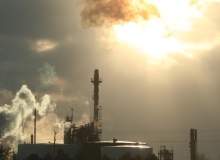
Asia-Pacific region will see the highest refining capacity addition by 2016
The increase in global demand for refined petroleum products will mainly come from an increasing demand in the Asia-Pacific, Middle East, Africa and South and Central American regions.
This increase in demand for petroleum products is due to increased economic activities in developing countries such as China, India and Brazil. As a result, demand for petroleum products in these countries is on the rise. These countries are also potential markets for Middle East and African crude oil suppliers.
The crude oil suppliers in the Middle East and Africa have realised profits from exporting refined products rather than crude oil and are now setting up their own refineries.
China witnessed the highest refinery capacity addition globally in 2010
In 2000, China had a refining capacity of 221.4 MMtpa, which was the fourth highest in the refining industry after the US, Russia and Japan. During the period 2000-2010, while the US added 79.8 MMtpa of refining capacity, China added almost three times that with 224.5 MMtpa of refining capacity addition.
In 2010, China had the second highest refining capacity of 445.9 MMtpa. This indicates an annual capacity growth rate of 7.0%, which is much higher than the annual growth capacity of the US refining market (0.9%).
China’s refining capacity expansion is due to growing domestic demand and increased economic activity during the period 2000-2010. China’s refining market is expected to grow further, at an annual rate of 3.7% to 2016, which will increase its refining capacity to 556.3 MMtpa.
How well do you really know your competitors?
Access the most comprehensive Company Profiles on the market, powered by GlobalData. Save hours of research. Gain competitive edge.

Thank you!
Your download email will arrive shortly
Not ready to buy yet? Download a free sample
We are confident about the unique quality of our Company Profiles. However, we want you to make the most beneficial decision for your business, so we offer a free sample that you can download by submitting the below form
By GlobalDataIndia had the highest average Nelson Complexity Index in the top ten emerging refining markets in 2010
The Nelson Complexity Index (NCI) is a measure of secondary conversion capacity in comparison to the primary distillation capacity of any refinery. It is an indicator of not only the investment intensity or cost index of the refinery but also the value addition potential of a refinery.
A high NCI indicates the refinery’s ability to process inferior quality crude or heavy sour crude, the refinery’s ability to obtain a superior refinery product slate, comprising of a high percentage of LPG, light distillates and middle distillates and a low percentage of heavies and fuel oil.
The NCI also indicates the refinery’s ability to make high quality refinery products, such as Bharat 3 gasoline or diesel.
Since 2008, demand for light and middle distillates has shown varying trends. While light distillates have witnessed a decreasing trend, especially in European countries, middle distillates have experienced an increasing trend. Refineries that produce light distillates, and don’t have the flexibility to switch to middle distillates production, were hit by the upsurge in demand for middle distillates in 2008.
Simple refineries with high capacity for the production of fuel oil were also hit due to the declining demand for fuel oil in power generation, where fuel oil has been replaced by natural gas.
Most refineries in India and China are either of the cracking or coking type and have the potential to process and / or refine heavy and sour crude. Some countries in the top ten emerging refining markets have a relatively low NCI compared to the global average. This is because these countries are still in the nascent stage of developing their refining markets and related infrastructure.
However, India and China had high average NCI scores of 5.3 and 5.2 respectively, compared to the global average of 5.7 in 2010.
The top ten emerging refinery markets had a lower complexity than the global average NCI in 2010
The top ten emerging markets are currently at the nascent stage of developing their refining markets and related infrastructure.
The top ten emerging markets are new markets that are developing complex refineries to use their readily available heavy and sour crude oil resources.
These markets are mostly developing economies with growing energy needs. This has created a mandate for oil companies to set up refineries with higher complexity in future.
National Iran Oil and Refining and Distribution Company will add the highest refining capacity globally by 2016
National Iran Oil and Refining and Distribution Company (NIORDC) will add 87.0 MMtpa of refining capacity by 2016, which is the highest globally. This capacity addition will be 23.85% of the total refining capacity addition in the top ten emerging markets and 8.9% globally.
For more details on the full GlobalData report, click here.
GlobalData is an industry analysis specialist company providing business information products and services. Its highly qualified team of analysts, researchers, and solution consultants use proprietary data sources, and various tools and techniques to gather, analyse and represent the latest and the most reliable information essential for businesses to sustain a competitive edge.







